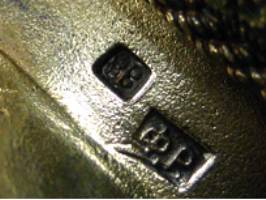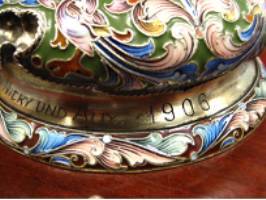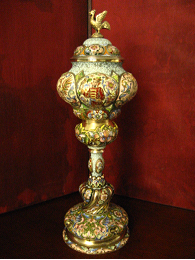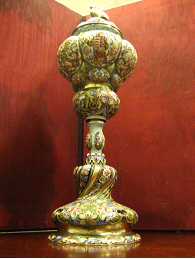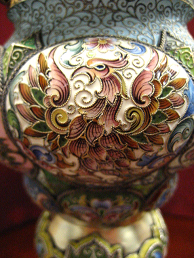Аукционы
Подлинность работ на ряде аукционов не подтверждена. Возможны подделки.
Russiansilverantiques
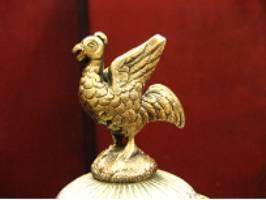
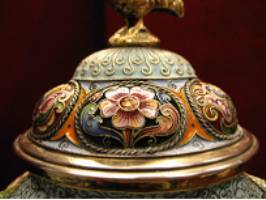

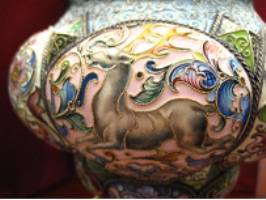

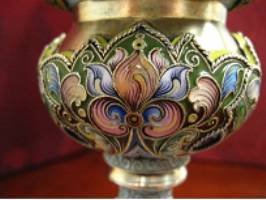
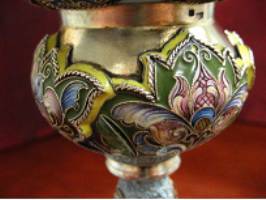
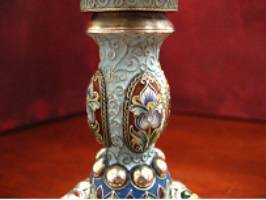
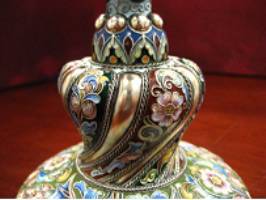
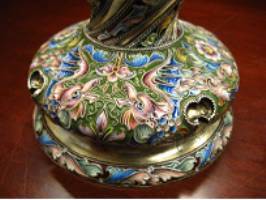
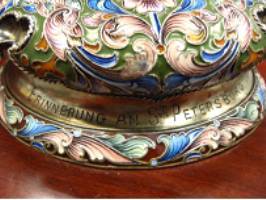
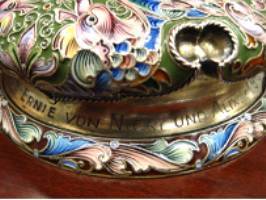
Russian gilded silver and cloisonnй enamel goblet and cover by Fedor Ruckert
Item# private
Product Description
A significant Russian gilded silver and cloisonnй enamel goblet and cover by Fedor Ruckert, Moscow, dated 1906. A present of Tsar Nicolas II and Tsarina Alexandra Feodorovna to her brother the Grand Duke of Hesse.
gilt silver cup in the nature of Akeleipokale. From different parts screwed. As a crowning deck Elbe vollplastischer Hahn. Very fine, almost decorative coverage of Cloisonnй-colored enamels. On foot, and cover outweighs floral motif next drachenartigen beings. On the wall in 6 Rundmedaillons alternating depictions of the deer, eagles and the Tsar Nicholas II as a falconer. The facial features of the tsar in enamel are very finely drawn, with Feodor Ruckert again meet his reputation was one of the best Enamelist in time to have been. Even the color palette used extensively within the individual cells speaks for high skills. At the foot very interesting dedication engraving: "Remembering St. Petersburg for Ernie by Nicky and Alix. 1906. This is a gift of Tsar Nicholas II and his wife Alexandra Feodorowna (born Alix of Hesse) and her brother the Grand Duke Ernst Ludwig of Hesse and Rhine. weight is 1429g. or 51.04oz
Alice, called Alix, Princess of Hesse and by Rhine (1872 - 1918) was married in 1894 in the later Czar Nicholas II of Russia, their cousin 2nd Grades. Her brother, Grand Duke Ernst Ludwig of Hesse (among friends called Ernie) traveled frequently Others St. Petersburg (except Alix was another of his sisters are married). The motives to accept, the Cup is a reminder of a common hunting experience. His brother-in-law Tsar Nicholas II, in his memoirs (EL Grand Duke of Hesse and by Rhine: recording) as "Nicky" anredet, he was very close -- so for example on p. 14 of the speech "his (s) frequent trips to England, after Petersburg ergebenen him to his brother" or "p. 79" I have the great luck that my brothers were my Schwдger (...)". Cup To see Alexander von Solodkoff, Russian goldsmith's art, p. 140, no 207, p. 194 A large part of his work on the distribution Fabergй.Provenance: According to the collector, the Cup after the revolution of Danish relatives of the tsar house "saved" and from Denmark in a major Swedish private collection, acquired from the collector there.
